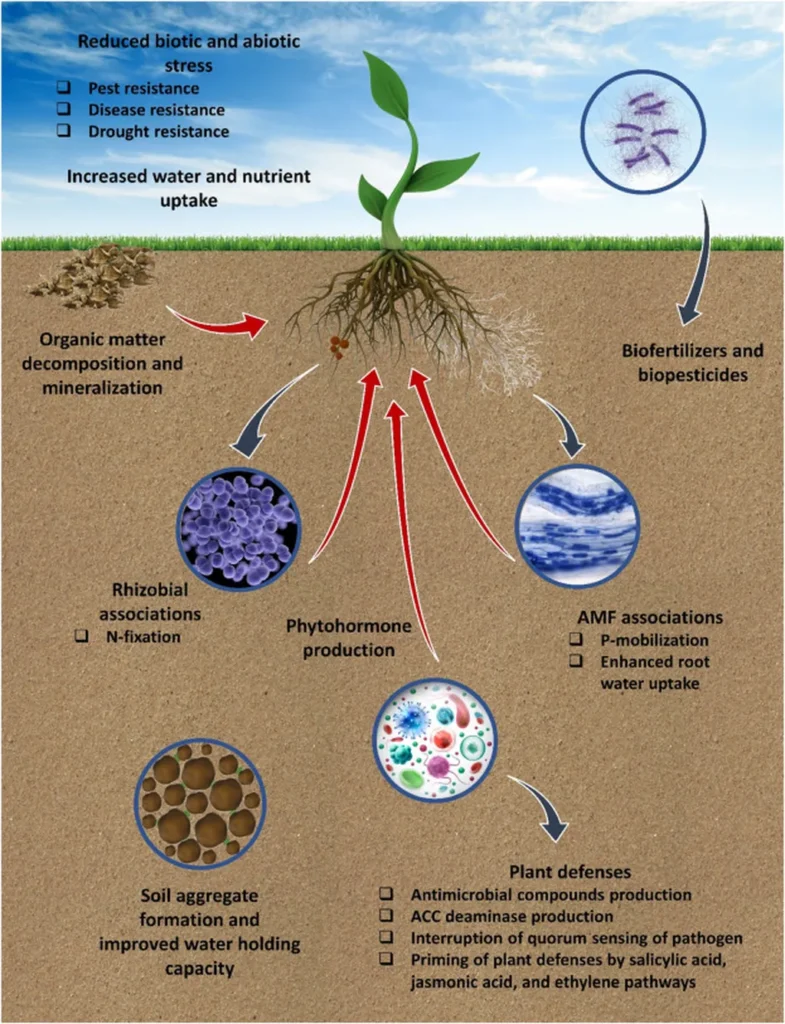Beneath our feet lies an unseen world teeming with life, one that could hold the key to sustainable energy solutions and environmental preservation. This hidden realm is the focus of a compelling new special issue in the journal *Soil Organisms* (translated from the Latin *Organismes du Sol*), spearheaded by Carlos Barreto of the Food and Agriculture Organization of the United Nations (FAO). The research delves into the intricate web of soil biodiversity, revealing its profound ecological, economic, and policy implications.
Soil, often overlooked, is a treasure trove of biodiversity, harboring more than half of the planet’s species. Yet, this vital resource remains underappreciated and largely unprotected. The International Network on Soil Biodiversity (NETSOB), a technical network of the Global Soil Partnership within the FAO, is at the forefront of promoting the sustainable use and conservation of soil biodiversity. This special issue, initiated by NETSOB, brings together cutting-edge research and insights to shed light on the importance of soil biodiversity and the threats it faces.
The articles in this special issue cover a wide range of topics, from the current state of soil biodiversity worldwide to the ecosystem services it provides. One of the key initiatives highlighted is the establishment of the Global Soil Biodiversity Observatory (GLOSOB), a groundbreaking effort to assess, monitor, and forecast changes in soil biodiversity on a global scale.
“Recognizing and preserving soil biodiversity is not just about safeguarding the health of our planet; it’s about securing our own future,” says Carlos Barreto, lead author and representative from the FAO. This sentiment underscores the urgency of the research and its potential impact on various sectors, including energy.
For the energy sector, understanding soil biodiversity is crucial. Soil organisms play a vital role in nutrient cycling, carbon sequestration, and soil health, all of which are essential for sustainable energy production. For instance, healthy soils can enhance the efficiency of bioenergy crops, contributing to a more sustainable energy mix. Additionally, soil biodiversity can influence the stability and productivity of land used for energy projects, such as solar farms and wind turbines.
The research also highlights the knowledge gaps in soil biodiversity, including the connections between specific components of soil biodiversity and parameters such as threats, ecosystem services, and soil degradation. This underscores the need for further research and collaboration to fully understand and harness the potential of soil biodiversity.
One of the articles in the special issue explores the use of soil respiration and soil organic carbon as proxies to infer soil biodiversity. While these indicators have their limitations, they provide valuable insights into the health and functioning of soil ecosystems. This information can be instrumental in developing strategies for soil conservation and sustainable land management, which are critical for the energy sector.
The special issue also delves into the potential threats to soil biodiversity, such as land use changes, pollution, and climate change. These threats not only jeopardize the rich tapestry of life beneath our feet but also have far-reaching implications for the energy sector. For example, soil degradation can reduce the productivity of bioenergy crops and increase the vulnerability of energy infrastructure to natural disasters.
In conclusion, the research published in this special issue of *Soil Organisms* underscores the importance of soil biodiversity and its potential impact on the energy sector. By recognizing and preserving this hidden wealth, we can pave the way for a more sustainable and resilient future. The insights and initiatives highlighted in this special issue serve as a call to action for researchers, policymakers, and industry leaders to collaborate and drive forward the conservation and sustainable use of soil biodiversity.

